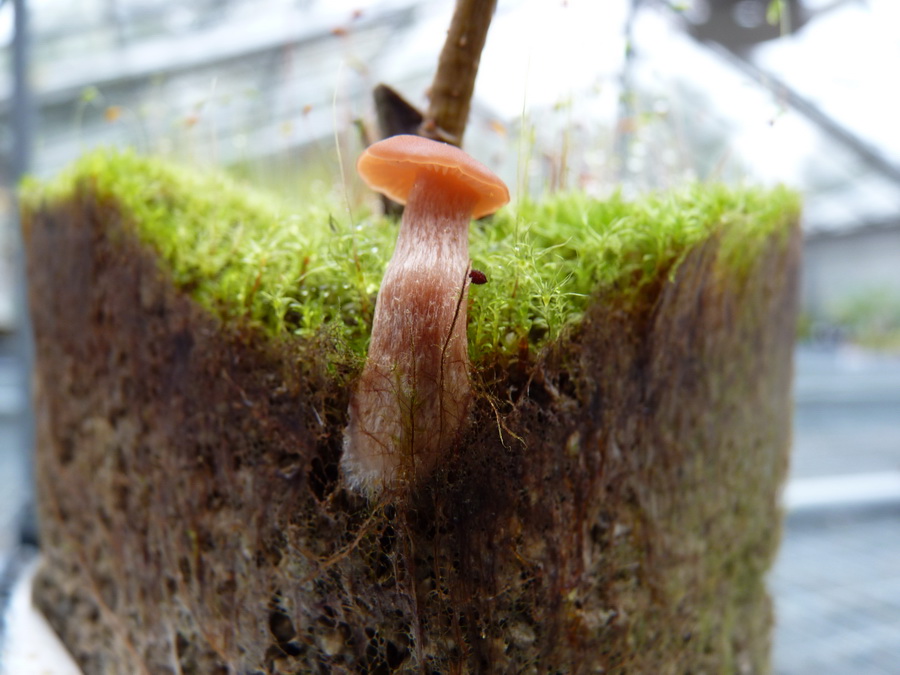
Fundamental Discovery Key to Creating Better Crops
July 24, 2019| |
A team of scientists from the U.S. Department of Energy's Oak Ridge National Laboratory (ORNL) has discovered the gene that controls an important symbiotic relationship between plants and soil fungi, and successfully facilitated the symbiosis in a plant that typically resists it.
The discovery came after 10 years of research at ORNL and partner institutions exploring ways to improve bioenergy feedstock crops such as Populus, or poplar tree. The scientists looked at the symbiosis formed by certain species of Populus and the fungus Laccaria bicolor. They used supercomputing resources and genome sequences to narrow down the search to a receptor protein, PtLecRLK1. Once they had identified the likely candidate gene, the researchers worked to validate their findings. They inoculated an engineered version of Arabidopsis that expresses PtLecRLK1 with the fungus which completely enveloped the plant's root tips, forming a fungal sheath indicative of symbiote formation.
According to Wellington Muchero, ORNL quantitative geneticist, they have converted a non-host into a host of this symbiont. Their success at making Arabidopsis interact with the fungus can now be used to perform similar studies on other biofuel crops such as switchgrass, or food crops like corn. He added that their findings have opened up opportunities in diverse plant systems while needing just one gene.
For more details, read the news article on the ORNL website.
| |
You might also like:
- Scientists Discover that Symbiotic Fungi Get Carbon from Plants in the Form of Fatty Acids
- Poplar in ISAAA GM Approval Database
- PK No. 57: Impact of GM Crops on Soil Health
Biotech Updates is a weekly newsletter of ISAAA, a not-for-profit organization. It is distributed for free to over 22,000 subscribers worldwide to inform them about the key developments in biosciences, especially in biotechnology. Your support will help us in our mission to feed the world with knowledge. You can help by donating as little as $10.
-
See more articles:
-
News from Around the World
- New Software Allows Plant Breeders to Select Best Traits
- Research Presents 5-Course 'Menu of Solutions' to Feed the World's 10 Billion by 2050
- Farmers in Uganda Eager for the Commercialization of Ag-biotech Products
- Kenyan Clergy Supports Bt Cotton Cultivation
- Improved Cacao Reference Genome Secures the Future of Chocolate
- Agricultural Progress Anchored on the Newly-signed Executive Order
- SABC Seeks Tax Exemption on Essential Farm Inputs to Fight Fall Armyworm
-
Research Highlights
- Two-year Field Trial Shows Cry1Ie Maize Has No Effect on Soil Animals
- Argentina Successfully Develops Boll Weevil-Resistant Cotton
- Fundamental Discovery Key to Creating Better Crops
-
Plant
- New Regulatory Mechanism of Self-Incompatibility in Rapeseed Reported
- How about CRISPR-edited Crops in Organic Agriculture?
-
Read the latest: - Biotech Updates (December 17, 2025)
- Gene Editing Supplement (December 17, 2025)
- Gene Drive Supplement (February 22, 2023)
-
Subscribe to BU: - Share
- Tweet

